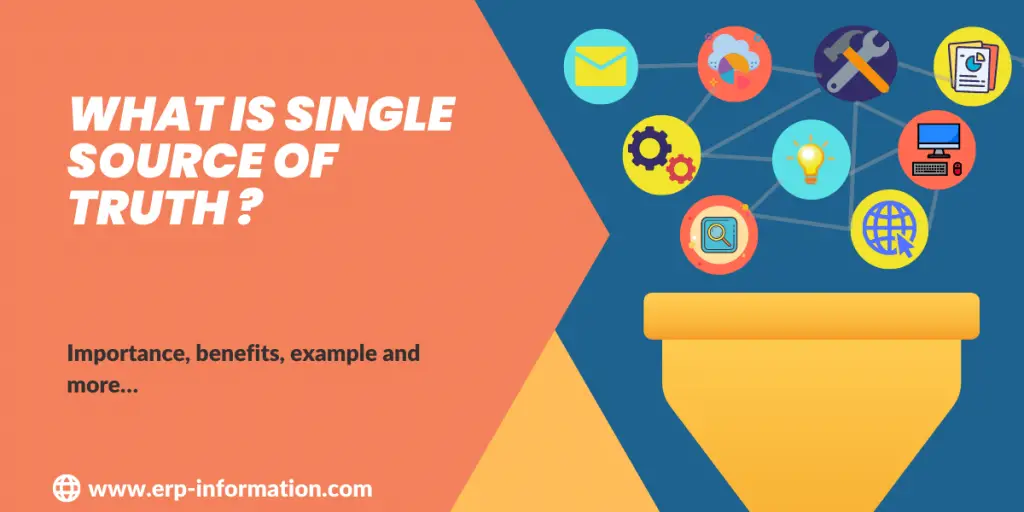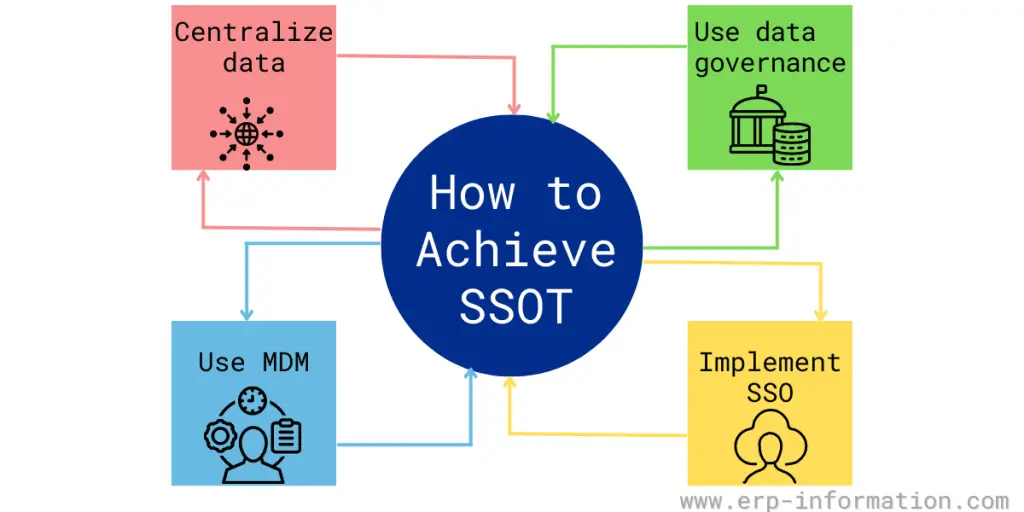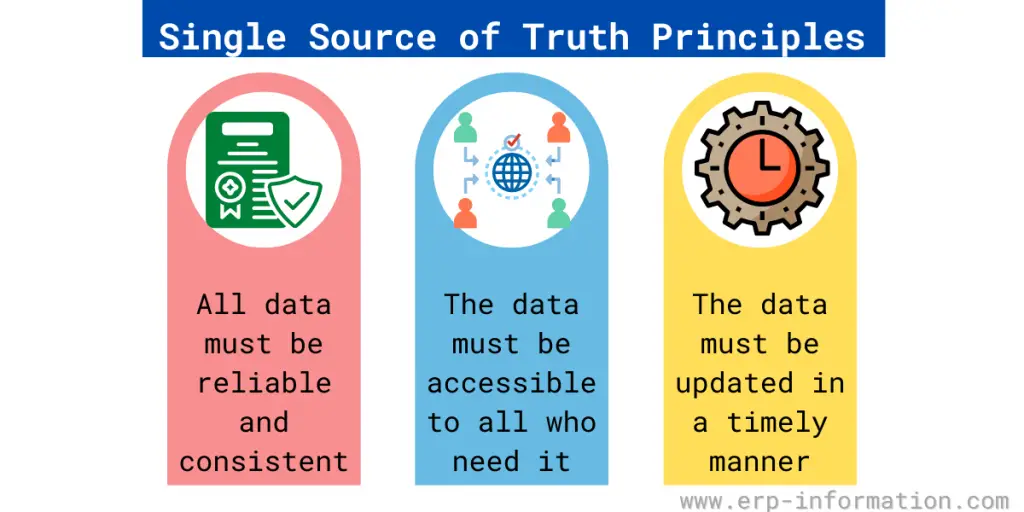Every business has data, but it’s not always easy to track. Not being able to get data access easily your data can lead to missed opportunities and incorrect business decisions.
A single source of truth can solve these problems by centralizing all your data in one place. That makes it easy to find and use, leading to better decision-making and a more efficient business.
Single source of truth databases is becoming increasingly popular as businesses strive to become more data-driven. Explore more as you read on.
In this article, we explain what exactly is a single source of truth. And how can it benefit your business?
What is a single source of truth, and Why is it important?
A single source of truth is a database or other repository that contains all the information about a business. This information can include customers, products, financials, and more.
Having all this data in one place makes it easy to find and use, leading to better decision-making and a more efficient business.
Single source of truth data management is essential because it allows businesses to make better decisions based on data that is easily accessible. When data is scattered across multiple departments or databases, it can be challenging to compile and use.
It collects all the data in one place, making it easy to find and use. In another way, it is a centralized location of various data. As a result, it leads to better decision-making.
How do we achieve a single source of truth?
There are a few ways to achieve it.
- First, centralize all your data in one place. That can be done by creating a central database or data warehouse.
- Use a master data management (MDM) system to collect and organize your data.
- Implement a single sign-on (SSO) system to allow easy access to all your data.
- Use a data governance policy to ensure that all data is accurate and up-to-date.
Here are some ways to obtain SSOT for business.
1. The Enterprise Service Bus (ESB): Bridging Data Across Systems
Imagine your business as a bustling metropolis with data highways connecting different neighborhoods (systems). Each neighborhood has its own information, but to make sense of it all, you need a central hub—the Enterprise Service Bus (ESB).
The ESB is like a traffic cop, ensuring that data flows smoothly between systems. Here’s how it works:
- Data Aggregation: Numerous source systems, like your CRM, inventory software, and accounting tools, send their data to the ESB on a regular cadence. This aggregated data represents the current state of your entire organization’s information.
- Real-Time Updates: Any changes in these source systems, whether it’s creating new records, updating existing ones, or even deleting information, are published via the ESB. This means that everyone connected to the ESB receives real-time updates, ensuring they always work with the latest data.
2. Master Data Management (MDM): Centralizing Your Data Universe
Another powerful way to obtain an SSOT is through Master Data Management (MDM). Think of MDM as the guardian of your organization’s most critical data—your master data. This data encompasses key information about customers, products, employees, and more.
Here’s how MDM can help:
- Central Hub: An MDM tool acts as a hub for your organization’s master data. It collects, stores, and manages this vital information in one place, making it visible and accessible via a single reference point.
- Data Governance: MDM enforces strict data governance policies, ensuring that data quality and consistency are maintained. It sets the rules for how data is entered, stored, and used across your organization.
- Data Integration: MDM seamlessly integrates with other systems, allowing you to connect to various data sources and ensure that they all align with the master data.
3. Event Sourcing and Event Store
Event Sourcing is all about keeping a detailed record of every single change that happens within your system. Think of it like a journal that logs every event, big or small, in a neat order. But to do this, you need a special kind of database known as an Event Store. This database is tailor-made for storing these events, and it’s the secret sauce behind Event Sourcing. The Event Store is more than just a database; it’s your SSOT in action. It’s where you gather all the events that trigger changes in your system. This means every update, every tweak, and every move is carefully documented in this Event Store.
Benefits
When you have a single source of truth, you know exactly where to look for the information you need. That can save you a lot of time and frustration, especially when working with complex data sets.
Reduced duplication of effort
If everyone is working off the exact source of information, there’s less risk of duplication of effort. That can lead to more efficient use of time and resources.
Improved decision-making
When you have a single source of truth, it’s easier to identify trends and correlations. This can help you make better decisions about where to allocate resources.
Reduced confusion and conflict
If everyone is working from the same data information, there’s less chance of confusion or conflict. That can lead to improved communication and collaboration among team members.
Improved data quality
When you have a single source of information, it’s easier to spot errors and inconsistencies. That can help you maintain high-quality data.
Barriers to a Single Source of Truth
There are several potential barriers to implementing this in your business.
Lack of standardization
If different team members are using different data sets, it can be challenging to establish a single source of truth. That is often the case in businesses with multiple locations or departments.
Siloed data
If data is siloed within different departments or team members, it can be difficult to establish a single source of truth. Silos can also lead to duplicate data sets and confusion about which data set is the most accurate.
Lack of governance
If there’s no clear governance framework in place, it can be challenging to establish and maintain a single source of truth. This is often the case in businesses with complex data sets or multiple stakeholders.
Technical challenges
If you’re working with complex data sets, it cannot be easy to establish a single source of truth. This is often the case with big data or data from multiple sources.
Cultural challenges
If team members are resistant to change, it cannot be easy to implement a single source of truth. This is often the case in businesses with a long history of using different data sets.
Data privacy
When working with sensitive data, it’s crucial to consider privacy and security concerns. That is especially important if you share data across multiple locations or departments.
SSOT principles
- All data must be reliable and consistent.
- The data must be accessible to all who need it.
- The data must be updated on time.
Example
Software development teams
Agile and DevOps, software development teams use different tools for each step. They must ensure all data are on the same page.
An SSOT (single source of truth) helps keep all the data in one place, including information about what needs to be done, finished tasks, and any bugs.
This helps them do their job faster. The same data will be used for evaluation and future prediction.
Follow the standards or law
Organizations can use SSOT to have control over all their data. This makes it easier to follow rules like HIPAA or GDPR.
It also simplifies checking the organization’s data since it is in one place. Changing how the data is stored is also easier if new laws come out.
Search Engine
One typical example of SSOT is a search engine. A search engine is a software system designed to search for information on the World Wide Web. It works with the SSOT system.
A search engine uses a web crawler to gather, parse, and store data about web pages, videos, and images. The data is then organized into an index, which provides results to users who enter keywords or queries into the search engines.
FAQs
State the difference between a system of record and a single source of truth.
The system of record is the main copy of data. The single source of truth is different. It combines many copies of data into one. This means different versions or types of the same data can be stored in one system.
Describe the difference between a Single Source Of Truth and a single version of truth.
A single Source of Truth means getting all your information from one place. A single Version of Truth means everyone in the company agrees on the same data.
What does “Single Version of Truth” mean in computerized business management?
“Single Version of Truth” (SVOT) in computerized business management is like having a reliable reference book in a library filled with conflicting information. It’s the principle that within your organization’s digital systems, there exists a singular, undisputed source of data that serves as the ultimate point of reference for all decisions and operations.
That means that all your business data, from sales figures to customer details, is stored and managed in a way that ensures it’s accurate, consistent, and up-to-date for everyone who needs it.
Conclusion
A single source of truth is a database where all information about a particular subject is stored. That includes everything from customer contact details to order history and product specifications.
It benefits businesses in several ways: it improves marketing efforts, aids decision-making, enhances business intelligence, and more. So if you’re not already using a single source of truth in your business, it’s worth considering.Thank you for your readership.


